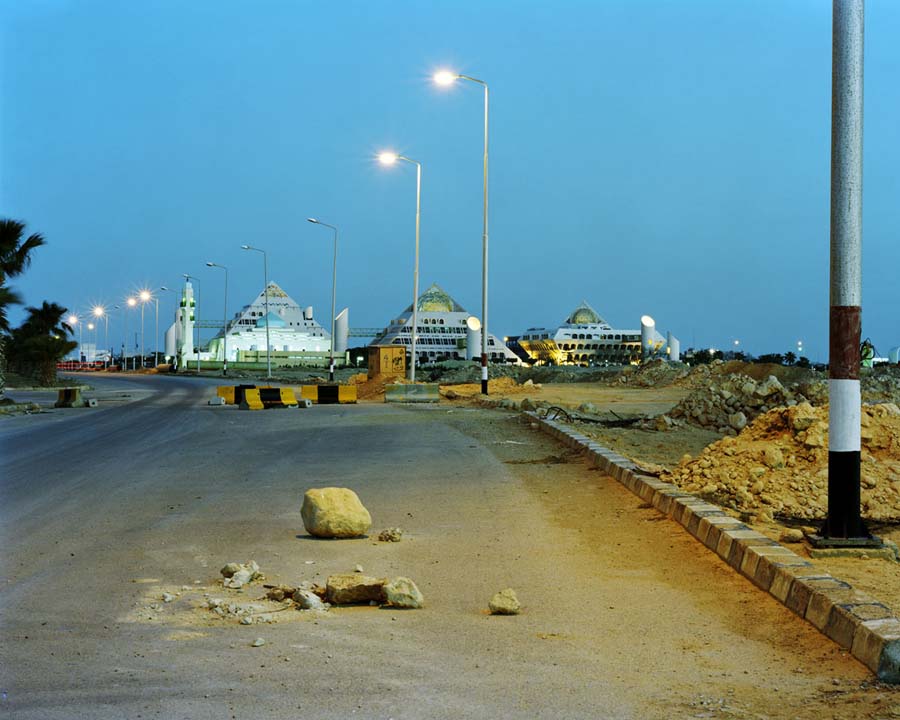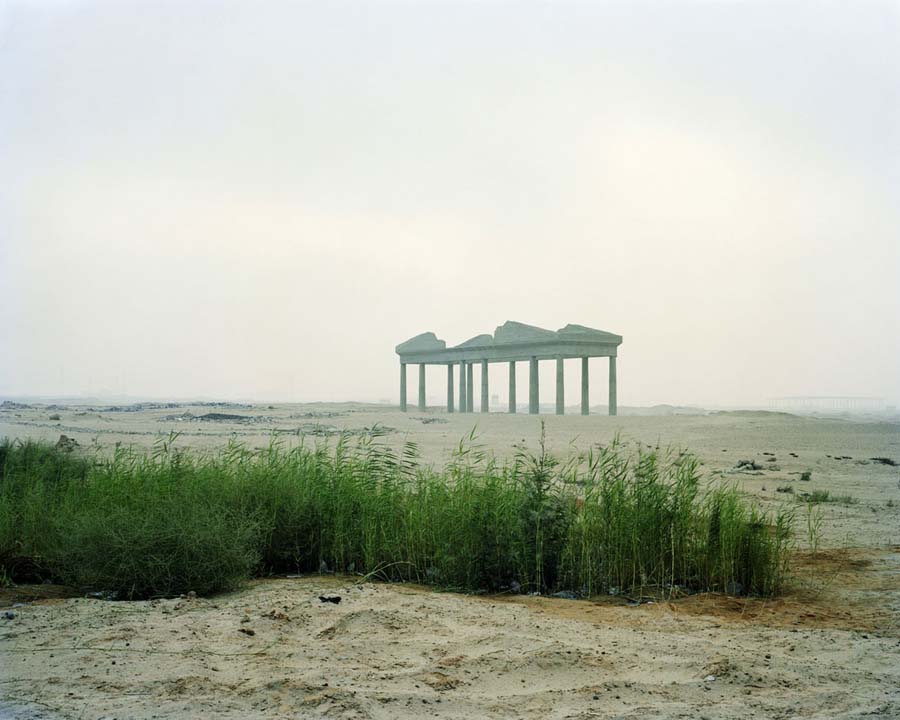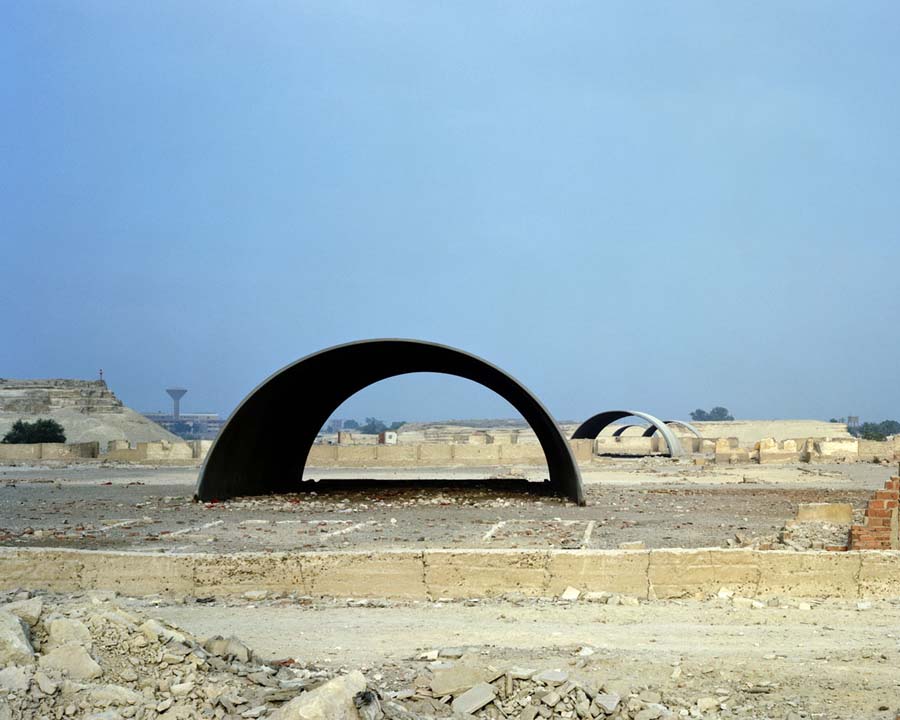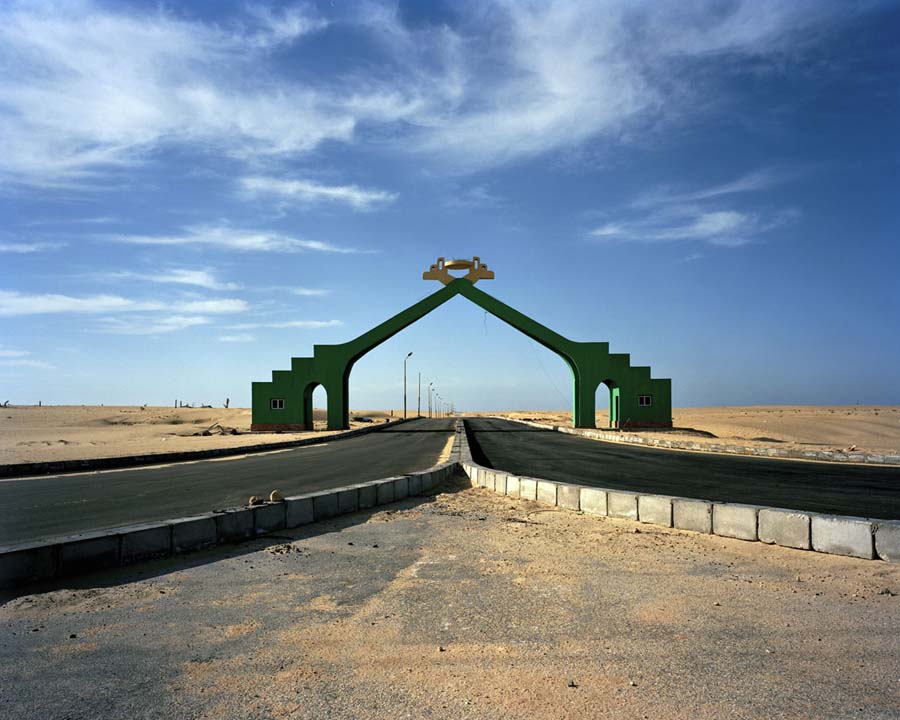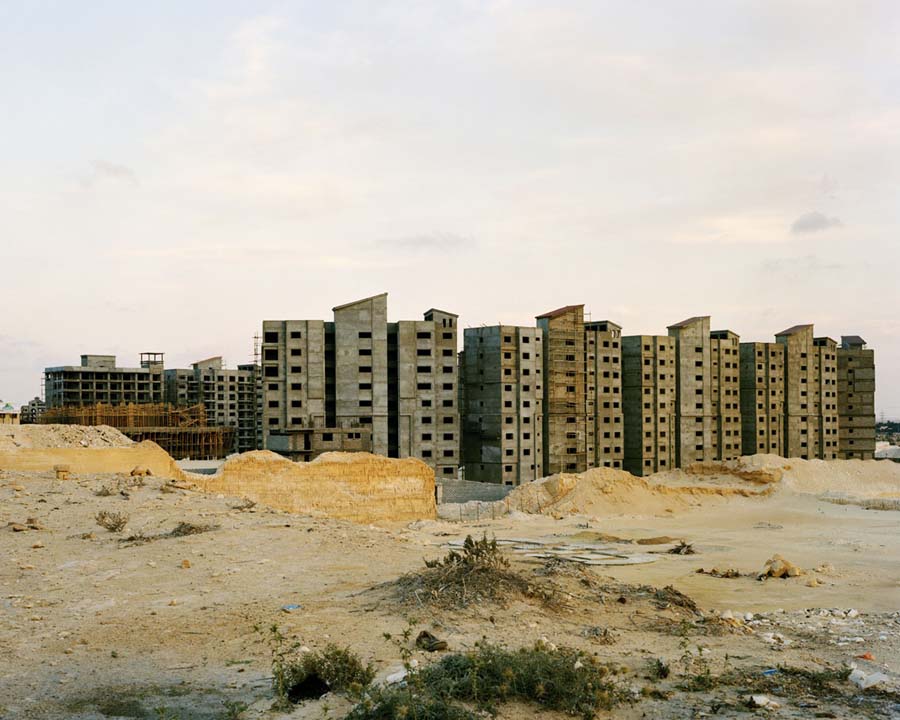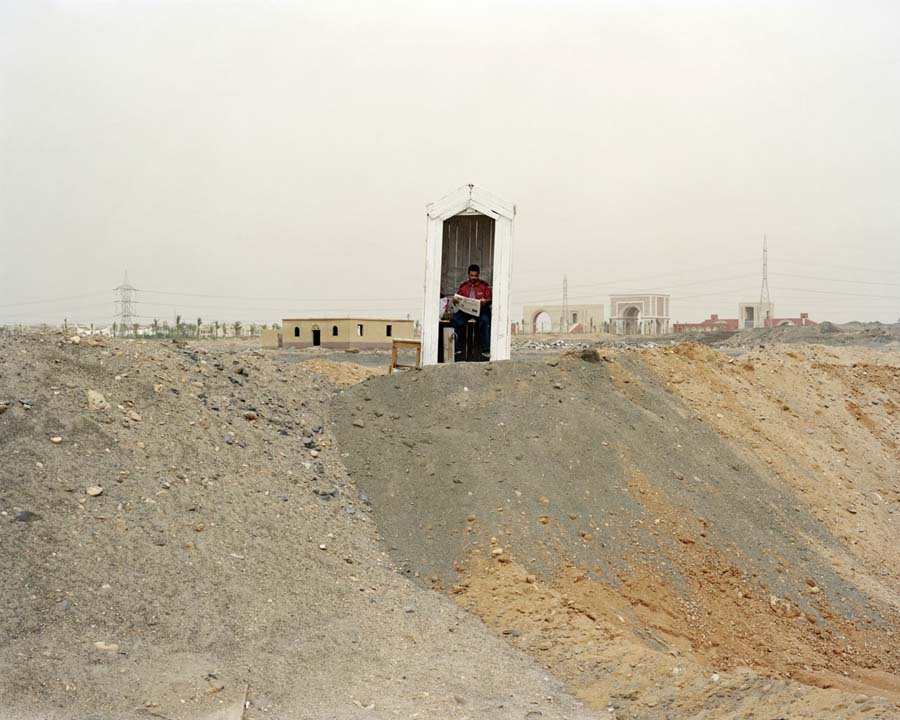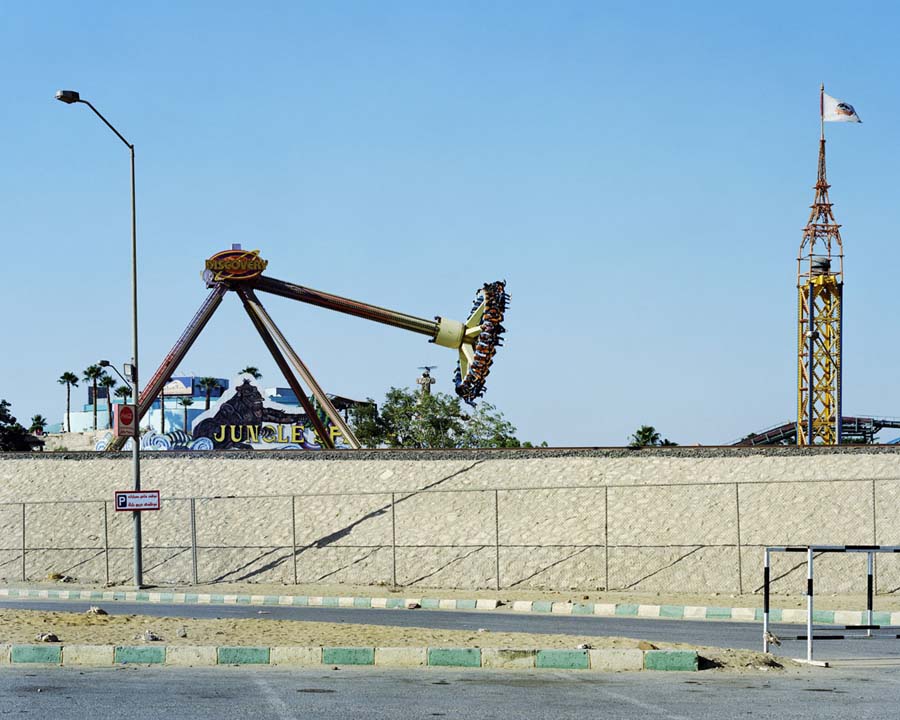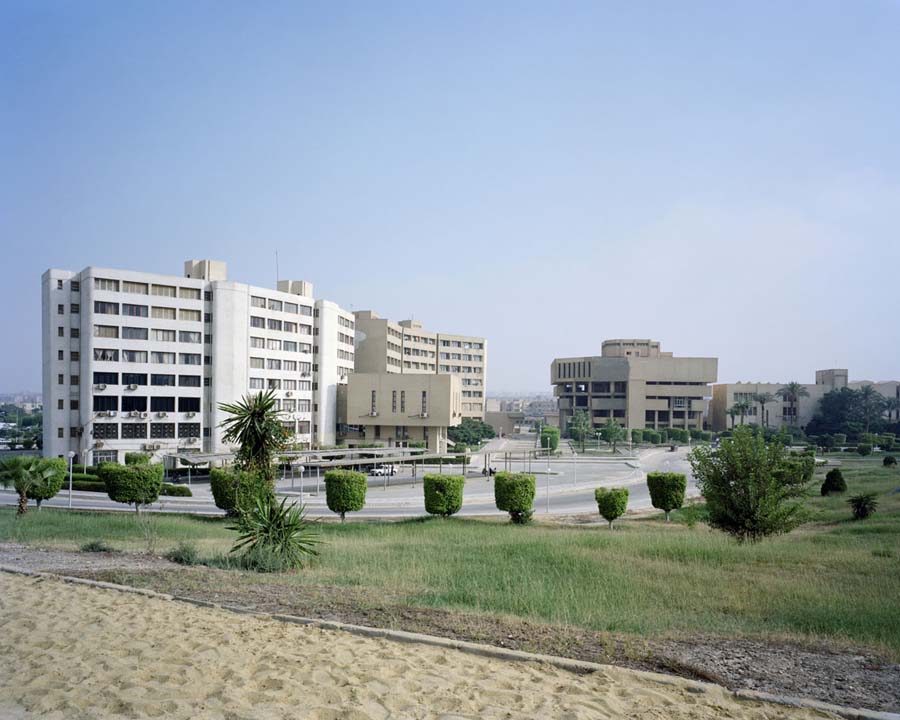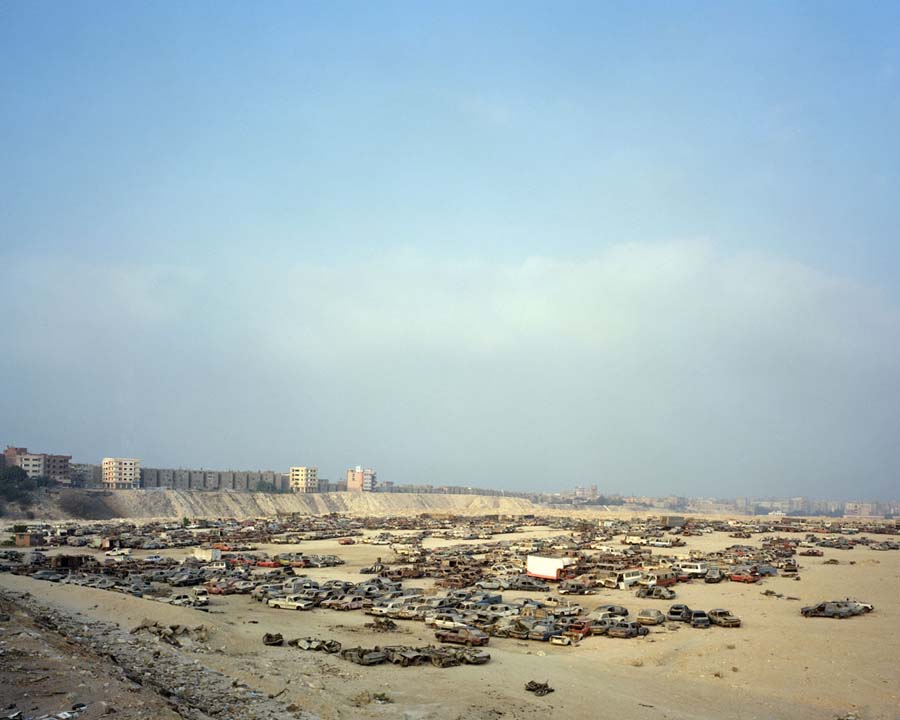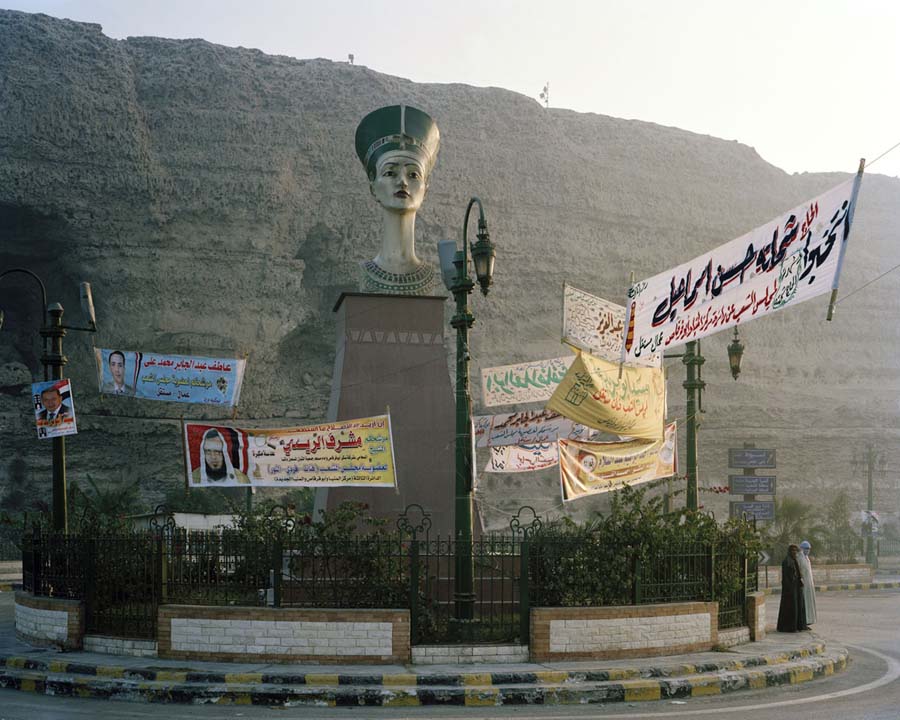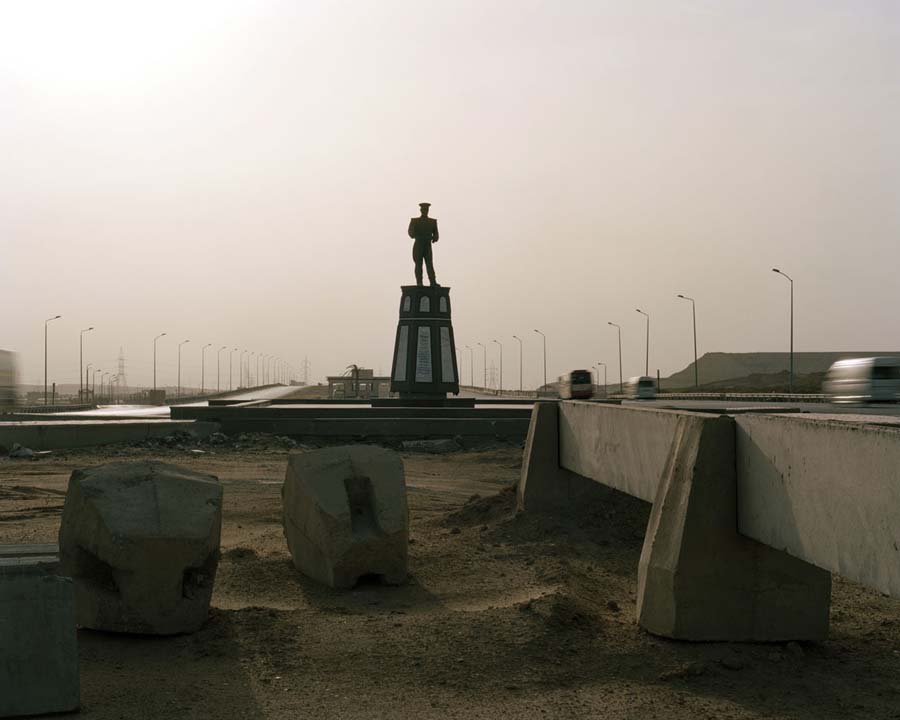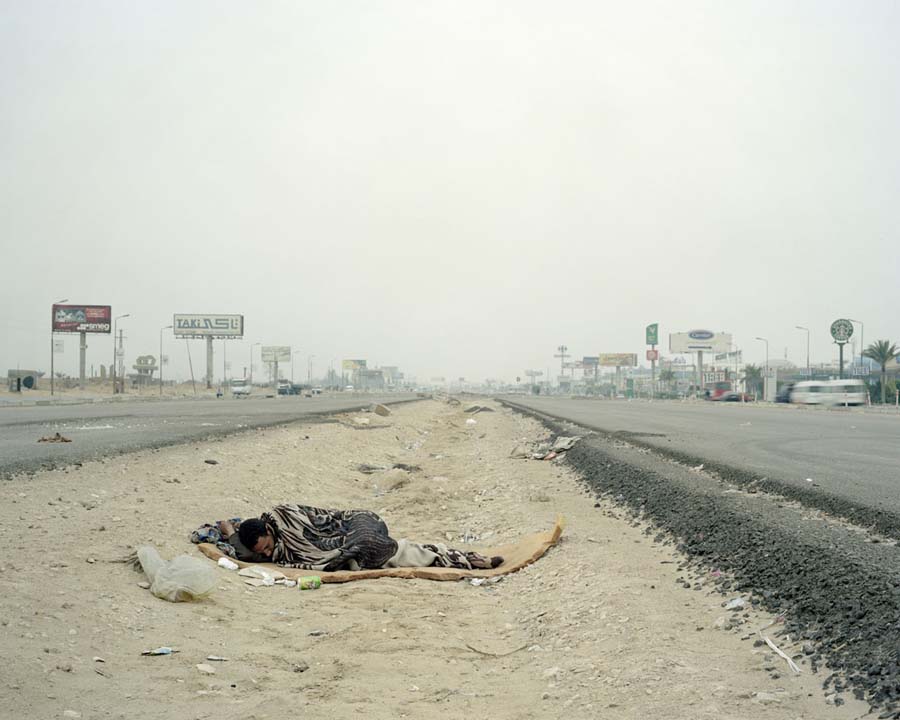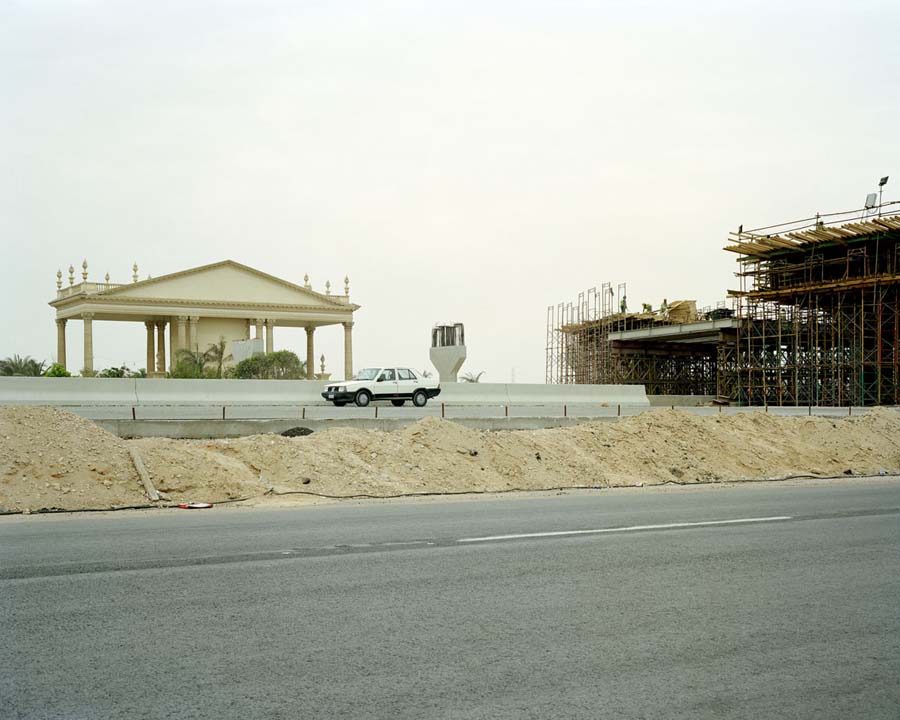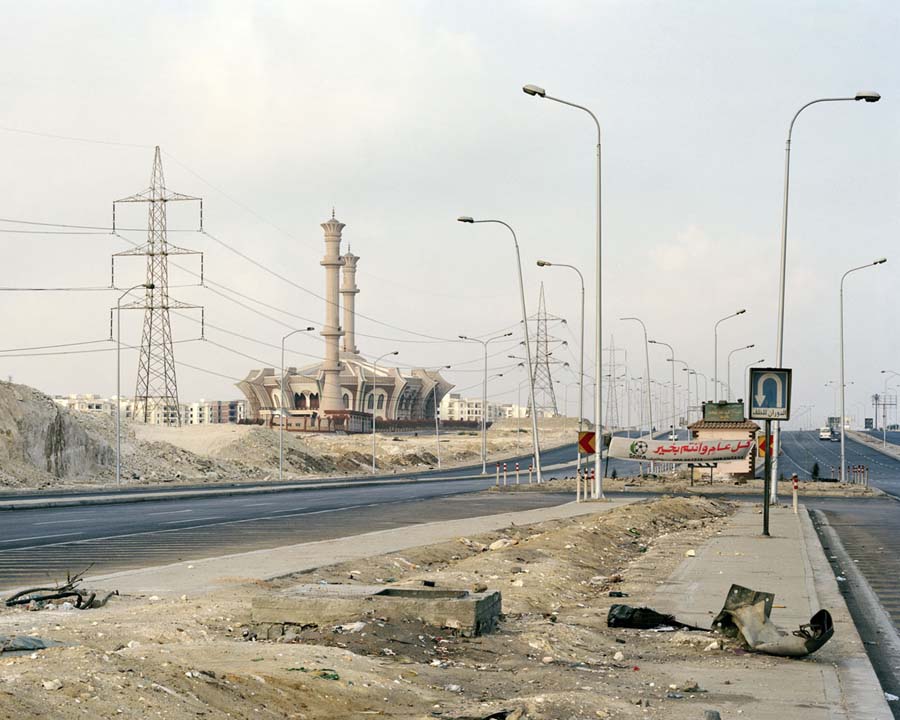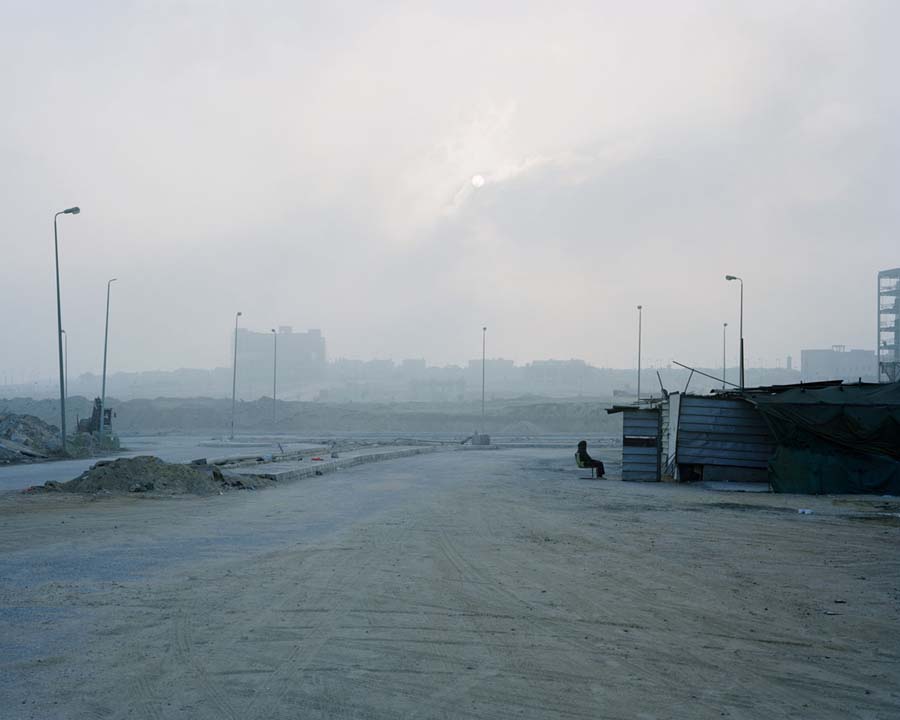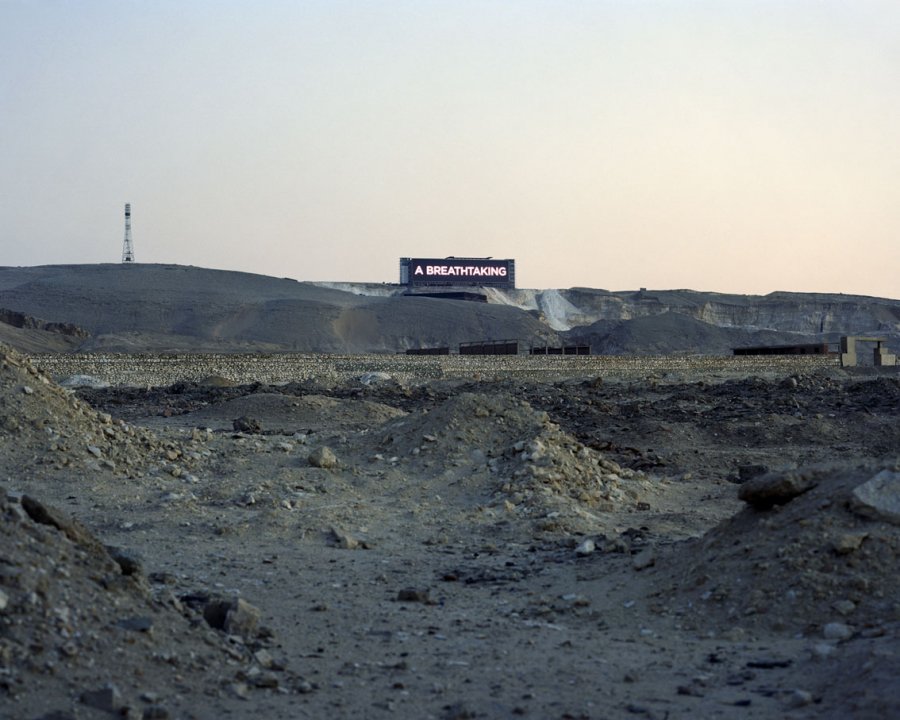The images of a crowded and riotous Tahrir Square are the most recent portraits of Egypt imprinted onto the public imagination. They offer a glimpse of a constantly evolving narrative of a nation whose political upheaval has transformed our perception of politics in the Arab world.
Yet far from Cairo’s tumultuous centre lies a world outside of time, cities littered with real-estate remains of pharaonic aspirations. It is an abandoned reality where a solitary figure wandering the empty streets seems to linger endlessly. The half-built apartment buildings scattered on the sides of the road give the impression not only of defeat, but a cruel absurdity.
A lonely door built in the middle of the desert, a forest of lampposts, a mosque in a shape of a spaceship. Emptiness turns these structures from brutal to uncanny. This is Egyptorama — a road trip that leads nowhere.
The photographs in this series were taken in Egypt in the midst of the turmoil sparked by the revolution, yet they do not belong to a particular moment in time, nor to any one city. They are photographs of a placelessness spanning over 8 000 km, a cultural and historical void. They are portraits not of a nation or a movement, but of empty expansions and concrete isolations. This is an Egypt put on hold, suspended outside of political urgency.
